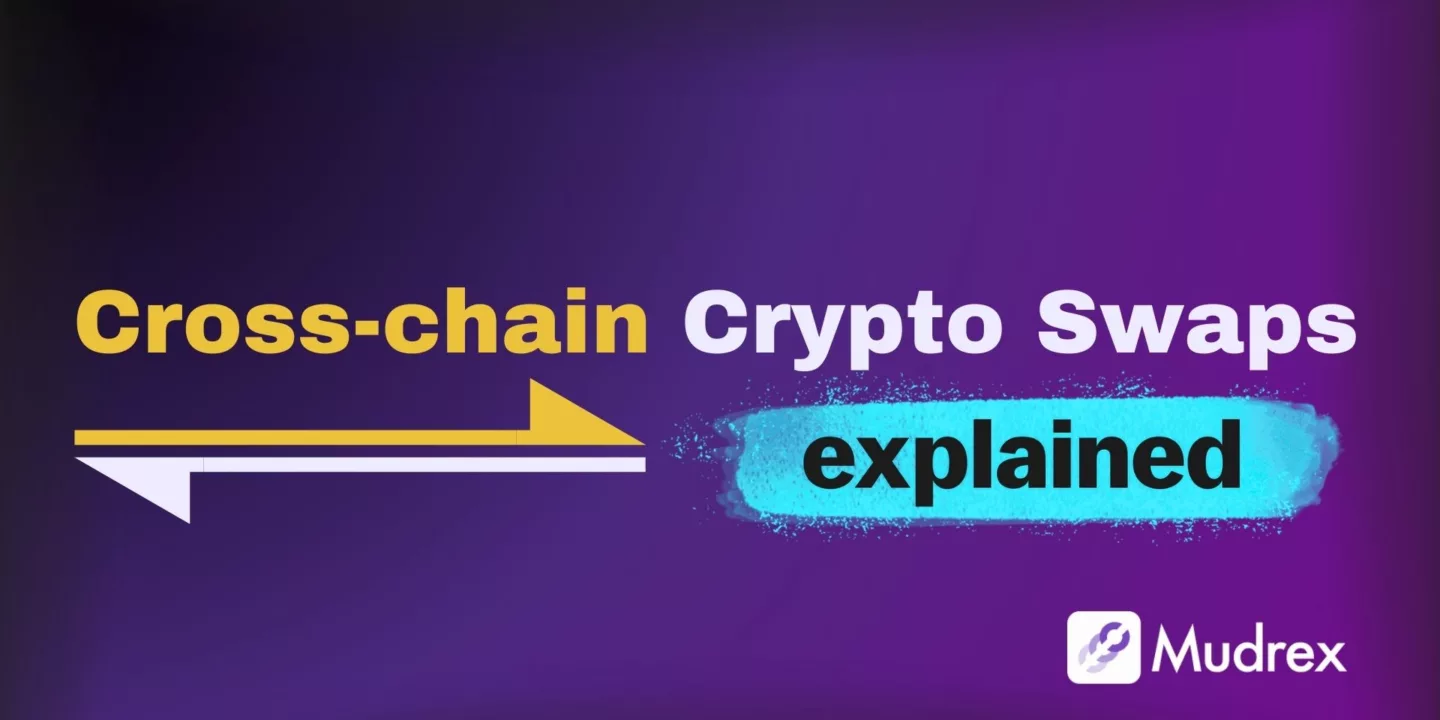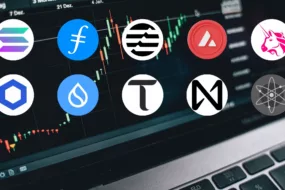
A Guide to Cross-Blockchain Cryptocurrency Swaps
Key Takeaways
- Understand what Cross-Blockchain Cryptocurrency Swaps are
- Learn about different types of cross-chain swaps
- Know how Cross chain swap works
- Understand how cross-chain swap differs from cross-bridge
Blockchain technology and cryptocurrencies have transformed the financial sector, providing new avenues for trading and investing.
One of the standout features of this technology is the ability to swap assets across different blockchains. Also known as cross-chain swapping, this method is rapidly gaining popularity as users seek to maximise diverse blockchain systems’ benefits and unique attributes.
Let’s discuss how to proceed with cross-chain swapping, types of swap, and many more.
What is a Cross Chain Swap?
Cross-chain swaps enable users to transfer assets between different blockchains directly, bypassing the need for centralised exchanges. This process improves blockchain interoperability by allowing seamless communication and transactions across diverse blockchain networks.
A user can exchange Bitcoin on its blockchain for Ethereum on the Ethereum blockchain without using a middleman. This removes the need to rely on centralised exchanges, which can be risky because of potential hacks, errors, or regulations.
Types of Cross-Chain Swap
The three common cross-chain swap types are:
1. Custodial Centralised Exchange (CCE)
Cross-chain exchanges (CCEs) enable users to exchange cryptocurrencies across multiple networks, but they function in a custodial manner. This implies that the exchange holds users’ digital assets during the swapping process to offer simplicity and speed while temporarily requiring users to trust the exchange with their assets.
2. Smart-Contract Based
This approach leverages smart contracts to enable token swaps between separate blockchain systems without relying on intermediaries or central authorities. It allows users to exchange tokens across different blockchains directly.
3. Smart-Order-Routing Based
This cross-chain swap method utilises a specialised Smart-Order-Routing Engine that taps into the liquidity of both centralised and decentralised exchanges. By comparing prices across various platforms, it finds the most favourable deals for each swap, offering users improved pricing and reduced fees.
How Cross-Chain Swaps Work?
To understand how the cross-chain swap works, you need to understand the following technology it uses:
- Atomic Swaps: They are the backbone of cross-chain swaps. They enable the simultaneous swapping of cryptocurrencies between two parties. The term “atomic” refers to whether the swap happens in its entirety or not at all, ensuring neither party is left at a disadvantage.
- Hash Time-Locked Contracts (HTLCs) are a specific type of smart contract in atomic swaps. They enforce the rules of the swap to ensure that the swap is secure and trustless. An HTLC requires that the recipient of a payment acknowledge receiving payment by generating a cryptographic proof within a certain timeframe. If the recipient does not complete the action, the funds are returned to the sender. This mechanism guarantees that the swap process will either be completed within a set timeframe or not executed at all once it starts.
- Smart Contracts: These are automated contracts in which the terms of the agreement are ingrained directly into the code. They automatically place transactions when predetermined terms are met. In the case of cross-chain swaps, smart contracts are used to make and implement the rules of the HTLC.
Here is a step-by-step explanation of how a cross-chain swap works:
- Step 1: Party A starts the process by setting up an HTLC on their blockchain (Blockchain A) and depositing their cryptocurrency. The HTLC creates a hash and generates a secret key.
- Step 2: Party B then sets up their HTLC on their blockchain (Blockchain B) using the hash received from Party A.
- Step 3: Party A confirms that Party B has correctly established the HTLC on Blockchain B by verifying the hash.
- Step 4: Party A uses the secret key to unlock the funds on Blockchain B, making the secret key visible on Blockchain B.
- Step 5: Party B then uses the revealed secret key to access the funds on Blockchain A, completing the cryptocurrency swap.
Cross Swap vs Cross Bridges: Key Differences
| Parameters | Cross Swap | Cross Bridges |
| Process | To perform a cross-chain swap, lock your tokens on the original blockchain, mint-wrapped tokens on the target blockchain, and use a native decentralised exchange to acquire the desired digital asset. | Bridges typically lock the original tokens on one blockchain and mint equivalent tokens on another or the reverse. |
| Trust | Although centralised exchanges offer cross-chain swaps, they add friction and require custodial services, temporarily relinquishing control of your assets. | With bridges, you need to trust the security of the bridge’s underlying implementation. |
| Security | Chainlink Proof of Reserve improves swap security by supplying solid collateralisation information and addressing the issue of uncollateralised mints. | Bridge security is contingent upon the integrity of the underlying implementation. |
| Use Case | Cross Swaps are set to become a key element of a connected, cross-chain ecosystem. | Bridges serve as an alternative route, with several ways to execute cross-network trades effectively. |
| Limitations | Cross Swaps require users to specify both the asset they want to exchange and the digital asset they aim to receive. | Bridges are limited to creating and destroying tokens across different blockchains to facilitate cross-chain swaps. |
How to Cross-chain Swap Efficiently?
- You will need a cryptocurrency wallet capable of cross-chain swaps. Some options here are Atomic Wallet, Trust Wallet, and MetaMask.
- Pick a platform that allows cross-chain swaps. For example, ThorSwap is popular because of its user-friendly interface and a wide range of supported assets.
- Ensure you have enough tokens for swap and transaction fees, especially during peak times. Always check current gas fees.
- Access the swap platform, select tokens, enter the amount, review details, and check the estimated amount you will receive.
- Confirm the transaction by signing with your wallet after verifying all details are correct. Review everything carefully.
- Cross-chain swaps can take minutes to an hour. Be patient and wait for confirmation.
- After confirming, check your wallet for the swapped tokens. Contact support if you encounter any issues.
- Ensure your new tokens are secure. If not using them soon, consider moving them to a hardware wallet.
Understand slippage before placing your trade. It refers to the difference between the expected price of a swap and the price at which it is executed. Familiarise yourself with acceptable slippage rates and set slippage tolerance to minimise unexpected losses.
Popular Platforms for Cross-Chain Swaps
- Verse DEX: Verse DEX provides a decentralised platform for cryptocurrency trading, allowing users to execute swaps without involving third-party custodians. Participants can earn trading fees by contributing to liquidity pools. It is a significant component of the Bitcoin.com/Verse framework.
- ThorSwap: It is a multi-chain decentralised exchange aggregator that facilitates cross-chain swaps between over 5,500 cryptocurrencies across 14 major blockchains. It also allows users to earn native yield on Layer 1 assets and offers one-click trading across nine blockchains.
- Stargate Finance: It operates with several blockchains, including Ethereum, BNB Chain, Avalanche, and Fantom, and eliminates the need for token wrapping. The platform features include a cross-chain DEX, liquidity pools, and user yield farming options.
Conclusion
Cross-chain swapping is a great tool for spreading out your investments, trying new blockchain systems, or making transactions easier. As this technology improves, you will probably see even more exciting developments and possibilities in cross-chain transactions.
To learn more about such crypto investment options or invest in cryptocurrencies, visit Mudrex.
Frequently Asked Questions
What is the best platform to swap crypto?
Leading crypto swap platforms are Verse DEX, ThorSwap, and Stargate Finance. Additionally, Binance Convert, Bybit Convert, and ChangeNOW stand out for their unique features, competitive fees, and extensive asset support.
Can you transfer between blockchains?
Yes, you can do so using cross-chain bridges or decentralised exchanges. These tools facilitate the movement of tokens from one blockchain to another by converting them into a compatible format and reintroducing them to the target chain.
Can I reverse a cross-chain swap if I make an error?
Because of blockchain technology’s decentralised and trustless characteristics, cross-chain swaps are irreversible after completion. Still, if your crypto wallet is compatible with both the source and destination blockchain protocols, you may transfer your crypto back to its original blockchain.
Is swapping crypto taxable?
In India, swapping cryptocurrencies triggers taxation. You will face a 30% capital gains tax, an additional 4% cess on gains, and a 1% Tax Deducted at Source (TDS).
What is the Interoperability Protocol?
Interoperability Protocols are frameworks that enable smooth communication between different blockchains. They support cross-chain messaging to transfer data and tokens between blockchains. This capability is crucial for building cross-chain dApps).




